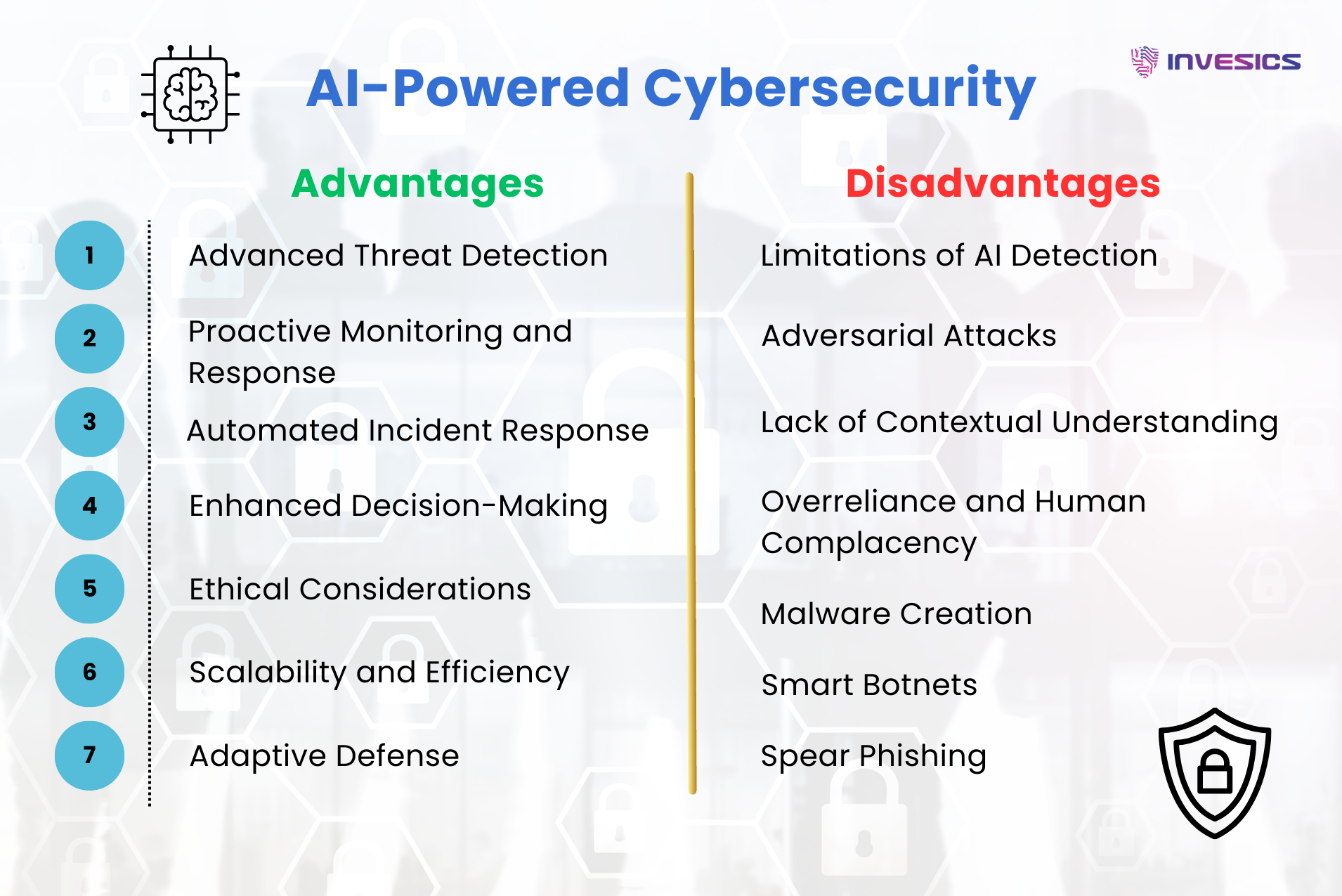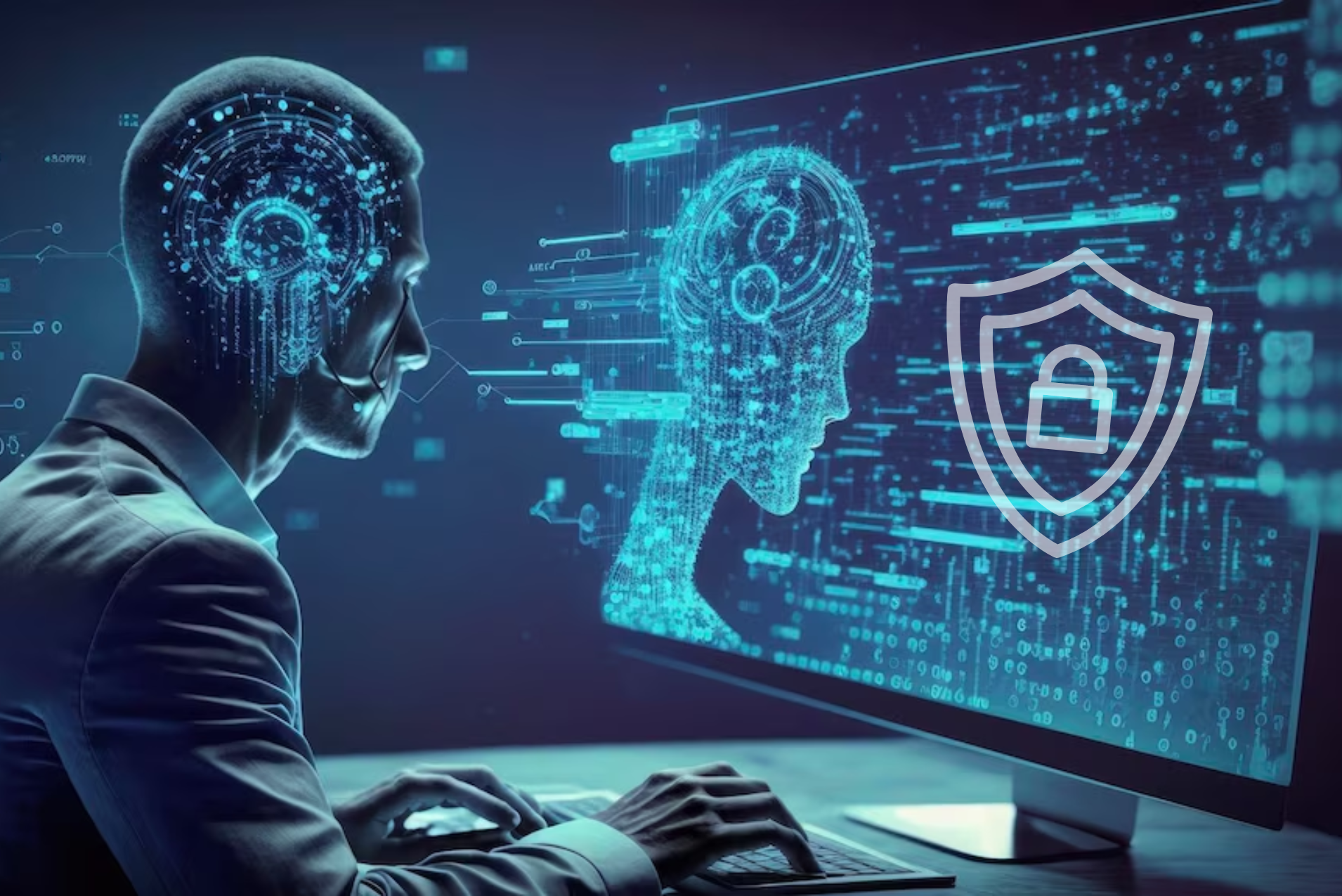Artificial Intelligence in Cybersecurity : Good or Evil ?
Ever since its introduction in November 2022, ChatGPT has garnered immense global recognition, attracting over 100 million users worldwide. This AI-driven chatbot has proven its prowess in a wide range of tasks, from tackling intricate queries to facilitating appointment scheduling. While AI tools like ChatGPT undoubtedly offer numerous advantages, it is crucial to acknowledge the valid apprehensions regarding potential cybersecurity risks tied to this technology.
Within this blog post, we will delve into the realm of AI in cybersecurity, examining both its positive contributions in bolstering security measures and the potential challenges that necessitate careful consideration for its safe and responsible implementation.
What is Artificial Intelligence?
Artificial Intelligence (AI) refers to the development of intelligent systems that can simulate human-like intelligence and perform tasks that typically require human intelligence, such as learning, problem-solving, and decision-making. It involves the use of advanced algorithms and computational models to enable machines to understand, interpret, and respond to complex data. AI encompasses various subfields, including machine learning, natural language processing, computer vision, and robotics. Through its continuous advancements, AI holds the potential to revolutionize numerous industries and drive innovation across various domains, making it a transformative force in today’s technological landscape.
The Role of Artificial Intelligence in Cybersecurity
Artificial intelligence (AI) has emerged as a game-changer in the realm of cybersecurity. Its ability to analyze vast amounts of data and detect patterns has revolutionized the way organizations defend against cyber threats. In this blog post, we will explore the crucial role played by AI in enhancing cybersecurity measures, including threat detection, real-time monitoring, and incident response. Let’s delve into how AI, powered by machine learning algorithms, offers a proactive and adaptive approach to safeguarding against evolving cyber risks.
How AI-powered machine learning algorithms can transform cybersecurity?
-
Advanced Threat Detection
AI empowers cybersecurity systems to identify and analyze complex threats by analyzing enormous datasets. It enables the detection of subtle patterns and anomalies that may go unnoticed by traditional security measures. This advanced threat detection capability provides organizations with an enhanced defense against sophisticated cyber attacks.
-
Real-Time Monitoring
By employing AI-driven monitoring tools, organizations can continuously monitor their digital environments in real time. AI systems can quickly analyze network traffic, user behavior, and system logs to detect any suspicious activities or potential breaches. This proactive monitoring approach allows for swift response and mitigation of emerging threats.
-
Adaptive Incident Response
AI-powered incident response enables organizations to handle security incidents with speed and efficiency. Machine learning algorithms analyze historical data and past incident response patterns to provide actionable insights and recommendations. This adaptive approach improves incident resolution time and enhances overall cybersecurity effectiveness.
-
Continuous Learning and Improvement
AI systems have the capability to continuously learn and adapt to new threats and attack techniques. By leveraging machine learning algorithms, cybersecurity solutions can stay updated and evolve alongside the ever-changing threat landscape. This proactive learning approach ensures that defenses remain effective against emerging cyber risks.
What are the Advantages of AI-Powered Cybersecurity?
harnessing the power of artificial intelligence (AI) for cybersecurity has become paramount. AI offers advanced capabilities in threat detection, proactive monitoring, and rapid incident response. By leveraging AI-powered cybersecurity solutions, organizations can fortify their defenses and stay ahead of malicious actors. However, it is crucial to emphasize that the ethical use of AI technology is essential to ensure its positive impact and prevent potential risks. Now we will explore the benefits of AI-powered cybersecurity while highlighting the importance of responsible and ethical implementation.
Key Points:
-
Advanced Threat Detection
- AI-driven solutions analyze vast amounts of data to detect complex threats.
- Machine learning algorithms identify patterns, anomalies, and indicators of compromise.
- Enhances proactive defense against sophisticated cyber attacks.
-
Proactive Monitoring and Response
- Real-time monitoring of network traffic, user behavior, and system logs.
- Early detection of potential threats and swift response.
- A proactive approach to mitigate risks and prevent security breaches.
-
Automated Incident Response
- AI automates incident response processes for faster resolution.
- Machine learning algorithms analyze historical data and provide insights.
- Reduces response time, minimizes impact, and allows strategic focus.
-
Enhanced Decision-Making
- Actionable insights based on AI data analysis.
- Identification of trends, vulnerabilities, and areas of improvement.
- Effective resource allocation and targeted security measures.
-
Ethical Considerations
- Addressing privacy concerns and ensuring transparency.
- Fairness in decision-making processes.
- Responsible AI governance, data privacy, and regulatory compliance.
-
Scalability and Efficiency
- AI-powered cybersecurity solutions can handle large volumes of data and scale to meet the needs of growing organizations.
- Automation reduces manual effort and increases operational efficiency, allowing cybersecurity teams to focus on strategic tasks.
-
Adaptive Defense
- AI systems continuously learn from new threats and adapt their defenses accordingly.
- By analyzing emerging patterns and evolving attack techniques, AI-powered solutions can proactively update security measures to stay ahead of cyber threats.
-
Continuous Improvement
- AI-powered systems can continuously improve their performance through feedback loops and iterative learning.
- Regular updates and refinements to AI models ensure the optimization of cybersecurity defenses over time.


What are the Risks and disadvantages of AI-Powered Cybersecurity?
While artificial intelligence (AI) has brought significant advancements to the field of cybersecurity, it is important to recognize and navigate the potential pitfalls associated with relying solely on AI for cyber defense. While AI-powered solutions offer numerous benefits, organizations must be aware of the limitations and risks involved. Now we will explore the potential pitfalls of relying on AI in cybersecurity.
-
Limitations of AI Detection
- AI systems heavily rely on historical data to identify patterns and detect threats. However, they may struggle to identify new or evolving attack techniques that do not resemble previously encountered patterns.
- Sophisticated adversaries can intentionally manipulate AI algorithms to evade detection, leading to false negatives or false positives.
-
Adversarial Attacks
- Adversaries can exploit vulnerabilities in AI models to deceive or manipulate them. By feeding malicious data or leveraging model biases, they can undermine the accuracy and reliability of AI-driven cybersecurity solutions.
- Adversarial attacks can result in the misclassification of threats or the inability to detect sophisticated attacks.
-
Lack of Contextual Understanding
- AI algorithms analyze data based on patterns, but they may lack the ability to interpret contextual information accurately. Understanding the intent or context behind certain actions or behaviors is a challenge for AI systems, potentially leading to false alarms or missed threats.
-
Overreliance and Human Complacency
- Overreliance on AI technology can lead to a false sense of security. Organizations may become complacent, neglecting to invest in other critical cybersecurity measures, such as human expertise, process improvement, and regular updates to security policies.
-
Malware Creation
- Cybercriminals can exploit AI algorithms to develop sophisticated and evasive malware, capable of bypassing traditional security measures.
- AI-powered tools may inadvertently facilitate the creation of more advanced and malicious malware, posing significant threats to organizational security.
-
Smart Botnets
- AI technology enables the creation of smart botnets that can autonomously coordinate attacks, adapt to defenses, and evade detection.
- These intelligent botnets pose challenges for traditional detection mechanisms, making it difficult to identify and mitigate their activities effectively.
-
Spear Phishing
- AI can be leveraged by attackers to personalize and automate spear phishing attacks, increasing their effectiveness and targeting specific individuals or organizations.
- Such attacks may use sophisticated social engineering techniques, making it harder to detect and defend against them.
Final Thoughts
As AI continues to shape the landscape of cybersecurity, it is crucial to navigate the associated risks. By understanding the potential pitfalls such as malware development, intelligent botnets, targeted spear phishing, automated reconnaissance, deepfakes, and adversarial attacks, organizations can take proactive steps to mitigate these dangers. A comprehensive approach that combines continuous monitoring, robust threat intelligence, ethical governance, and collaboration is essential. Striking the right balance between AI’s capabilities and responsible implementation will lead to a safer and more secure digital environment.
At INVESICS, we are committed to staying at the forefront of the cybersecurity landscape. With our cutting-edge solutions, we empower organizations to safeguard their data and technology environment against potential cyber threats. By partnering with us, you can ensure comprehensive protection for your organization and stay ahead in the ever-evolving world of cybersecurity.

